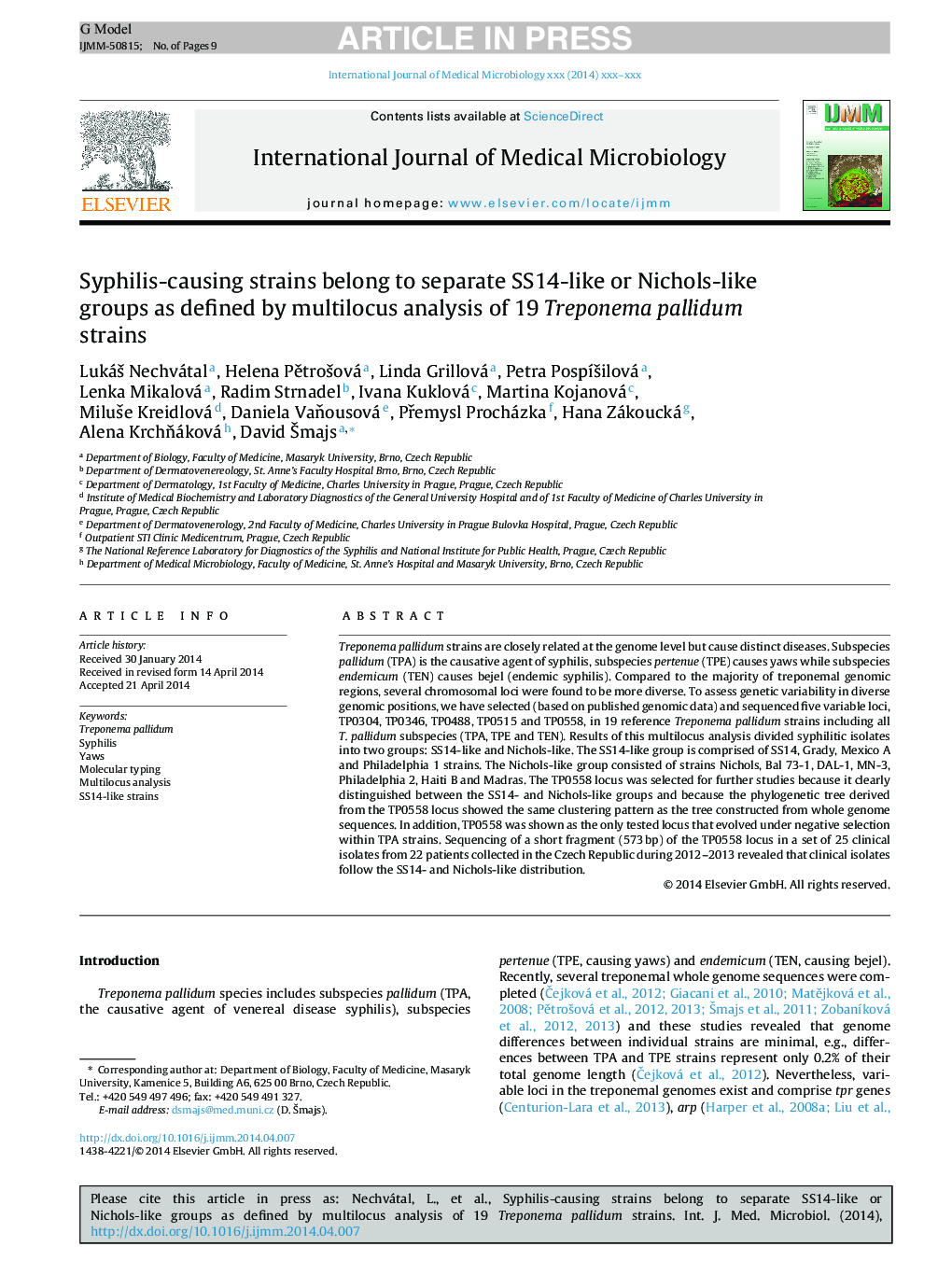| Article ID | Journal | Published Year | Pages | File Type |
|---|---|---|---|---|
| 8385640 | International Journal of Medical Microbiology | 2014 | 9 Pages |
Abstract
Treponema pallidum strains are closely related at the genome level but cause distinct diseases. Subspecies pallidum (TPA) is the causative agent of syphilis, subspecies pertenue (TPE) causes yaws while subspecies endemicum (TEN) causes bejel (endemic syphilis). Compared to the majority of treponemal genomic regions, several chromosomal loci were found to be more diverse. To assess genetic variability in diverse genomic positions, we have selected (based on published genomic data) and sequenced five variable loci, TP0304, TP0346, TP0488, TP0515 and TP0558, in 19 reference Treponema pallidum strains including all T. pallidum subspecies (TPA, TPE and TEN). Results of this multilocus analysis divided syphilitic isolates into two groups: SS14-like and Nichols-like. The SS14-like group is comprised of SS14, Grady, Mexico A and Philadelphia 1 strains. The Nichols-like group consisted of strains Nichols, Bal 73-1, DAL-1, MN-3, Philadelphia 2, Haiti B and Madras. The TP0558 locus was selected for further studies because it clearly distinguished between the SS14- and Nichols-like groups and because the phylogenetic tree derived from the TP0558 locus showed the same clustering pattern as the tree constructed from whole genome sequences. In addition, TP0558 was shown as the only tested locus that evolved under negative selection within TPA strains. Sequencing of a short fragment (573Â bp) of the TP0558 locus in a set of 25 clinical isolates from 22 patients collected in the Czech Republic during 2012-2013 revealed that clinical isolates follow the SS14- and Nichols-like distribution.
Related Topics
Life Sciences
Biochemistry, Genetics and Molecular Biology
Biochemistry, Genetics and Molecular Biology (General)
Authors
LukáÅ¡ Nechvátal, Helena PÄtroÅ¡ová, Linda Grillová, Petra PospÃÅ¡ilová, Lenka Mikalová, Radim Strnadel, Ivana Kuklová, Martina Kojanová, MiluÅ¡e Kreidlová, Daniela VaÅousová, PÅemysl Procházka, Hana Zákoucká, Alena KrchÅáková,
